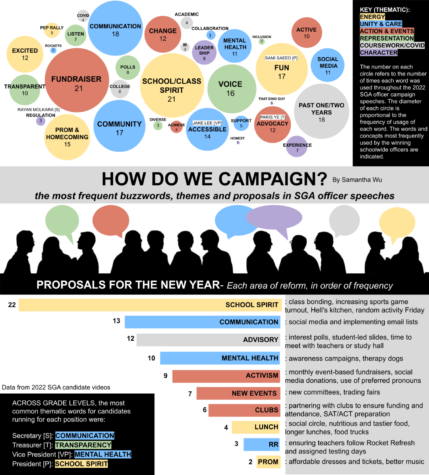Year-round daylight saving time passes Senate
Freshman Nöel van der Walde changes an alarm clock on her phone.
Americans simultaneously turned their clocks forward by one hour on Mar. 13, carrying on the century-old annual daylight savings routine.
The following Tuesday, the Senate unanimously passed the Sunshine Protection Act, which proposes to make daylight saving time (DST) permanent beginning in 2023. If the House passes the bill, Americans will no longer need to turn clocks forward every March and back to standard time every November— a routine that many now resent.
“It’s just annoying,” junior Ash McClintock said. “I personally don’t think it serves a real purpose now with modern technology.”
DST was first implemented in 1918 to conserve energy during World War I. By extending daylight an additional hour into the evening during warmer months, people relied less on electricity and artificial light. Although this saved the US two million dollars worth of gas bills a century ago, it’s doubtful that DST still has this effect today.
The amount of energy saved from reduced artificial lighting during DST is offset by increased use of air conditioning and heating. Darker and colder mornings at the onset of DST push people to turn on heaters, and sunnier evenings keep air conditioners running for longer, especially in regions close to the equator.
Many modern citizens find that March daylight saving is not only failing to deliver on its intended benefits, but also generating undesirable consequences. Several studies have found a statistically significant increase in road accidents and heart attacks on the Monday following “spring forward.”
As such, many students and teachers find that these biannual time changes have become an inconvenience at best and detrimental at worst. “You lose the hour on Saturday night, and your body thinks it’s an hour earlier on Sunday night, so you’re probably losing more sleep Sunday night into Monday night, and then the work week starts,” said RM’s psychology teacher Carlos Montalvan.
Time changes can also create an additional burden for parents, who have to help their children adapt as well. “It’s tricky enough for yourself, but you also have to worry about your kids waking up early,” Montalvan said.
Lawmakers echoed these grievances. “This past weekend, Americans […] had to lose an hour of sleep for absolutely no reason,” Senator Patty Murray of Washington said. “Any parent who has worked so hard to get a newborn or a toddler on a regular sleeping schedule understands the absolute chaos changing our clocks creates.”
While there is widespread enthusiasm among politicians and scientists alike about a year-round time system, the question of which one to keep — standard time or daylight saving time — continues to be debated.
Many people seem to prefer the latter. “I would much rather have an extra hour of sunlight when I’m really awake and outside and can appreciate it than in the morning when I’m in school,” McClintock said. For businesses, an additional hour of daylight means more time for consumers to spend money on shopping and leisure activities. For commuters, brighter evenings means safer road conditions during evening rush hour.
However, sleep scientists firmly support standard time over DST. According to the American Academy of Sleep Medicine, standard time better aligns with the body’s circadian rhythm — brighter mornings help people wake up naturally, and darker evenings facilitate the production of melatonin, helping people sleep.
On the other hand, permanent DST is likely to hinder sleep and bring health consequences by making it harder to fall asleep and harder to wake up, leading to more sleep deprivation. “The idea is that you’re off-kilter,” Dr. Beth Malow, director of the sleep division at Vanderbilt Medical Center, told the New York Times.
In spite of how readily the Senate passed the bill, winning enough support to make it law may prove difficult. The US tried year-round DST in 1974 and, after unfavorable public reception, returned the country to four months of standard time each year once again.
Your donation will support the student journalists of The Tide, Richard Montgomery High School's student newspaper. Your contribution will allow us to purchase equipment and cover our annual website hosting costs.

Crystal Li is a senior and The Tide’s Science Writer. She covers topics ranging from public health to technology. Outside of newspaper writing, Crystal...












